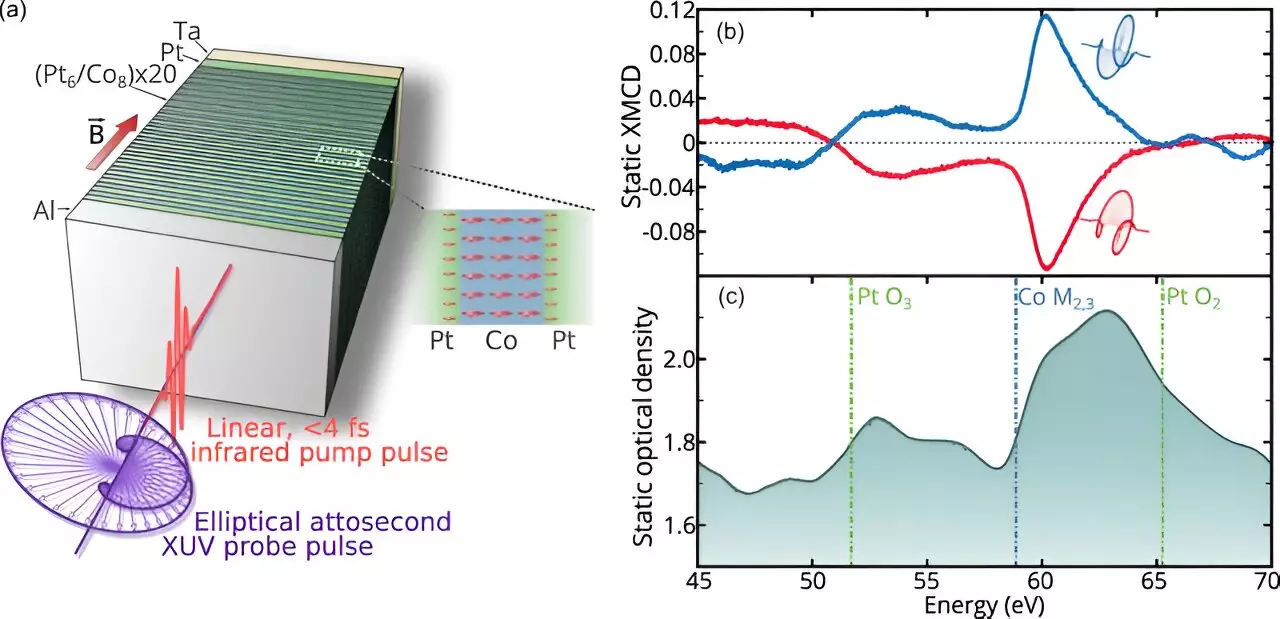Recent advancements in the realm of spintronics—a field that exploits the intrinsic spin of electrons—have opened new avenues for high-speed and energy-efficient electronic devices. A groundbreaking study published in Physical Review Letters by an international team of physicists has demonstrated the novel ability to generate spin currents directly through the use of ultrashort laser pulses. This research holds exciting implications for future technologies that could drastically change the landscape of electronics.
Spin currents play a pivotal role in modern electronic paradigms. Unlike conventional electrical currents, which rely solely on the motion of charge carriers, spin currents are defined by the alignment of electron spins. This characteristic alignment can potentially streamline electronic processes, making devices faster and less energy-intensive. Historically, researchers have sought indirect methods to manipulate spins and generate spin currents, often leading to inefficiencies due to the mixed orientations of spins produced by conventional laser methods.
In the recent study, the research team devised a method that leverages both linearly polarized and circularly polarized lasers to directly generate spin currents. The key innovation involved constructing a target block composed of twenty alternating layers of platinum and cobalt, each merely a nanometer thick. Subjecting this layered structure to a strong magnetic field aligned with the layers effectively organized the spins of electrons in both materials, setting the stage for the subsequent interaction with light.
This intricate setup culminated in the firing of a polarized laser pulse onto the block, followed by a circularly polarized probe laser. Remarkably, this dual-laser approach led to a swift transfer of electron spins between the alternating layers within femtoseconds—an unprecedented speed that far surpasses that achieved by earlier techniques. Such rapid manipulation of spin states is essential for the future design of spintronic devices.
The experimental results affirmed the theoretical predictions made by the research team. Notably, the lasers initiated substantial changes in the magnetic ordering of both the platinum and cobalt layers, demonstrating that the laser-induced processes could effectively enhance control over spin dynamics. The alignment of spins facilitated by the external magnetic field, followed by the precision of laser impacts, illustrates a harmonious blend of optical and magnetic techniques to refine electronic properties.
In parallel with the experimental outcomes, the team conducted theoretical calculations to simulate the interactions of electrons within the layered materials. These calculations corroborated the experimental findings, providing a robust framework of understanding that melds theory with practice.
The implications of this research are far-reaching. The ability to directly generate organized spin currents could resurge the development of next-generation spintronic devices, promising enhancements in computational speed and energy efficiency. As society increasingly leans toward sustainability and minimizing energy consumption, exploring innovative methods such as this recent discovery will be vital. Moving forward, researchers will undoubtedly delve deeper into optimizing these techniques for practical applications, potentially paving the way for a new era in electronic technology grounded in the principles of spintronics.


Leave a Reply